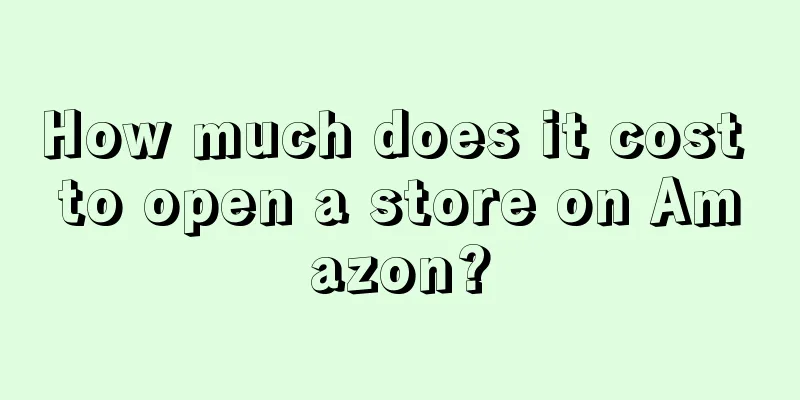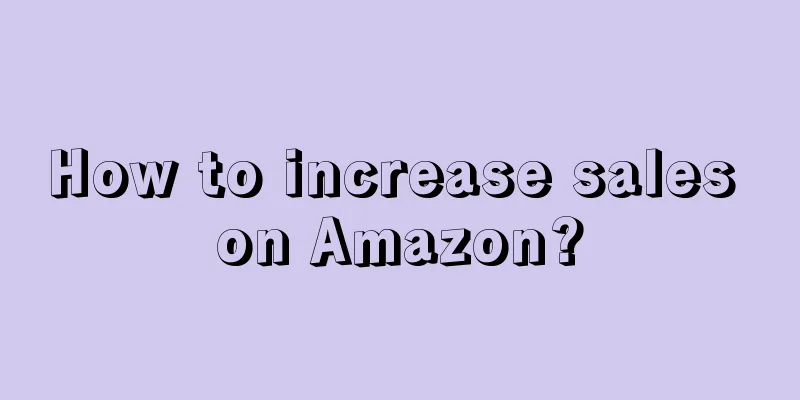How much does it actually cost to run an Amazon store? Today I will give you a calculation:
1. Basic costs of opening a store
(1) Account registration fee: 0 yuan
First of all, there are two ways to register for opening a global store: the investment manager channel and the self-registration channel. No matter which method you choose to register an account, it is free. At present, more people prefer to register using the investment manager channel.
(2) Monthly rental fees and sales commissions
Amazon Global Store has two types of accounts: Professional and Individual. These two are the two major account types of Amazon. We can choose according to personal or company circumstances.
Their fee rates are also different:
Professional: Fee = Sales Commission + Monthly Rent
Individual: Fee = Sales Commission + Per-item Charge
In addition, Amazon has three major sites in Europe, North America, and Japan. Each site is different and the fees charged are also different.
Amazon North America Fees:
Amazon European Station Fees:
Amazon Japan site fees:
2. Basic operating expenses
(1) PPC/CPC on-site promotion costs
Within a certain range, the higher the bid, the greater the possibility of being ranked at the top, but there is a limit. Bidding is only a secondary factor and will never be the mainstream. Any search engine and platform will only give priority to products that are most beneficial to consumers. The so-called traffic purchased with money will always rank second.
The predicted bid and cost per click for each keyword can be viewed in the backend advertising promotion management. The CPC click price is a combination of the second place bid + the percentage of the difference between the first and second place + your performance.
(2) FBA Fees
If you want to do well on Amazon, it is very necessary to launch FBA.
Note: FBA fee = first-leg fee + FBA logistics distribution fee + monthly storage fee + inventory configuration service fee.
Logistics and distribution fees: the fees charged by Amazon when shipping using FBA. Generally it is charged by piece. The amount of money charged for each item depends on the weight and size of the product. Moreover, the logistics and distribution costs will be adjusted at different times.
Monthly storage fees: Amazon's products can be divided into standard size and super-standard size according to their size; according to their nature, they can be divided into media products and non-media products. If you use the FBA warehouse service, you will need to pay the FBA warehouse rental fee proportionally per cubic foot per month.
Inventory configuration service fee: that is, inventory configuration service fee, which is also the warehouse closing fee. When sellers convert their listings to FBA shipments, Amazon will randomly distribute your products to multiple warehouses. Amazon uses separate warehouses by default. If you do not set up combined warehouses, you do not have to pay this fee. If you set up combined warehouses, Amazon will charge per piece, and the specific fee depends on the number of destinations selected.
PS: You can search "2017 Amazon FBA fees" on Baidu for the specific charging standards for the above three items. For the cumbersome FBA financial expense management, it is recommended that you use the FBA reporting function of Mabang ERP, which is more convenient.
(3) Trademark registration and brand filing fees
At present, Amazon does not require sellers to register their brands. However, the previous Generic trademark infringement incident shows that brand registration is very protective for sellers. What Xiaomei recommends to everyone is that if your financial situation allows, you can register the trademark and file the brand when the store starts, but if your financial situation does not allow, you can consider it later, when the store is already established.
Since trademarks are protected territorially, US trademarks are only protected in the United States, and EU trademarks are only protected in the EU. There is no need to apply for each site. This can be handled by an agency, which can help everyone apply for subsidies and benefits.
(4) European VAT. Just look at the picture and you will understand what VAT is.
There are three VAT rates:
20% standard rate (applies to most goods and services)
5% low tax rate (fuel and household energy, sanitation products, energy-saving materials, child seats, etc.)
0% tax rate (applicable in very few cases: baby clothes and shoes, books and newspapers, public transportation and sanitary napkins)

